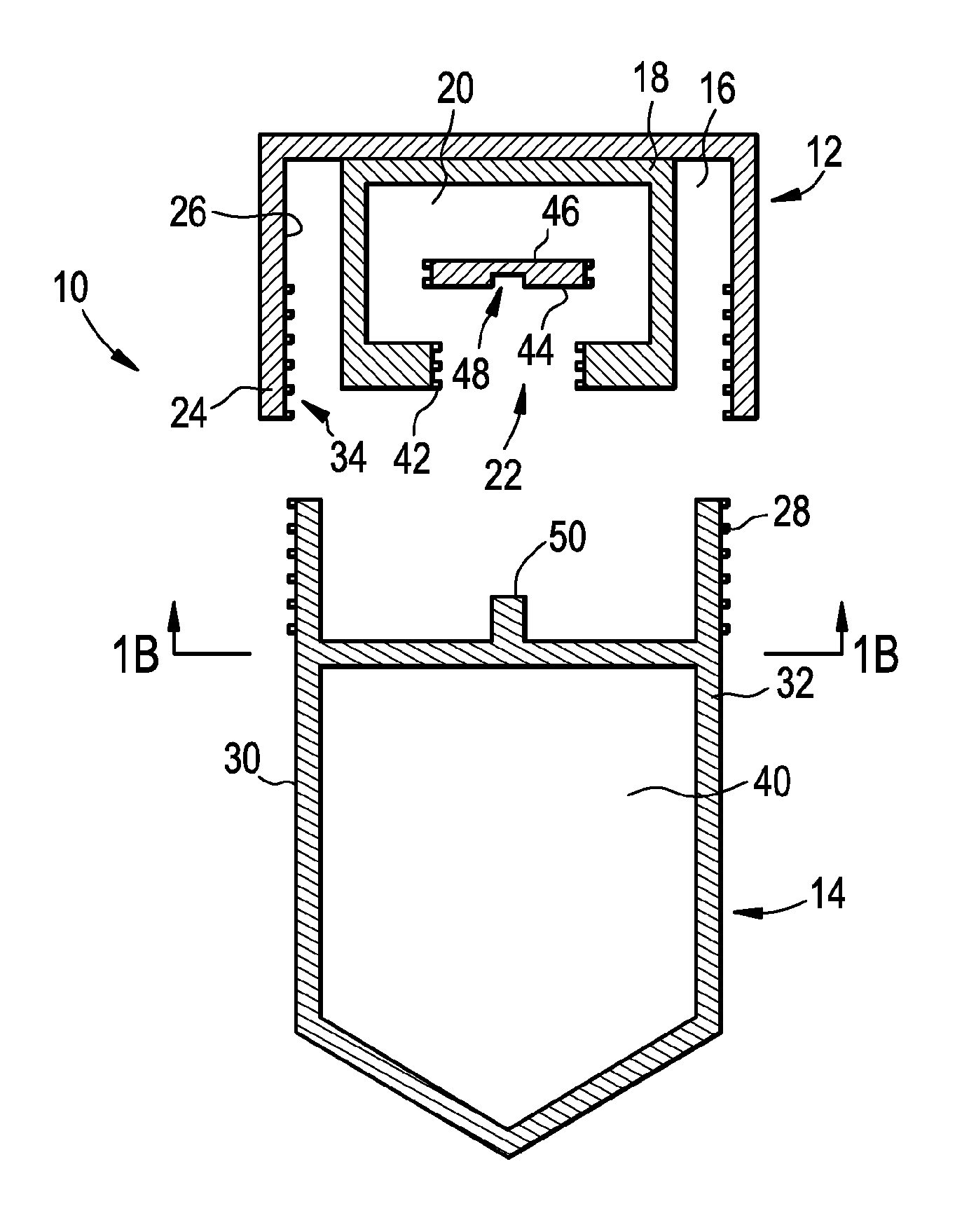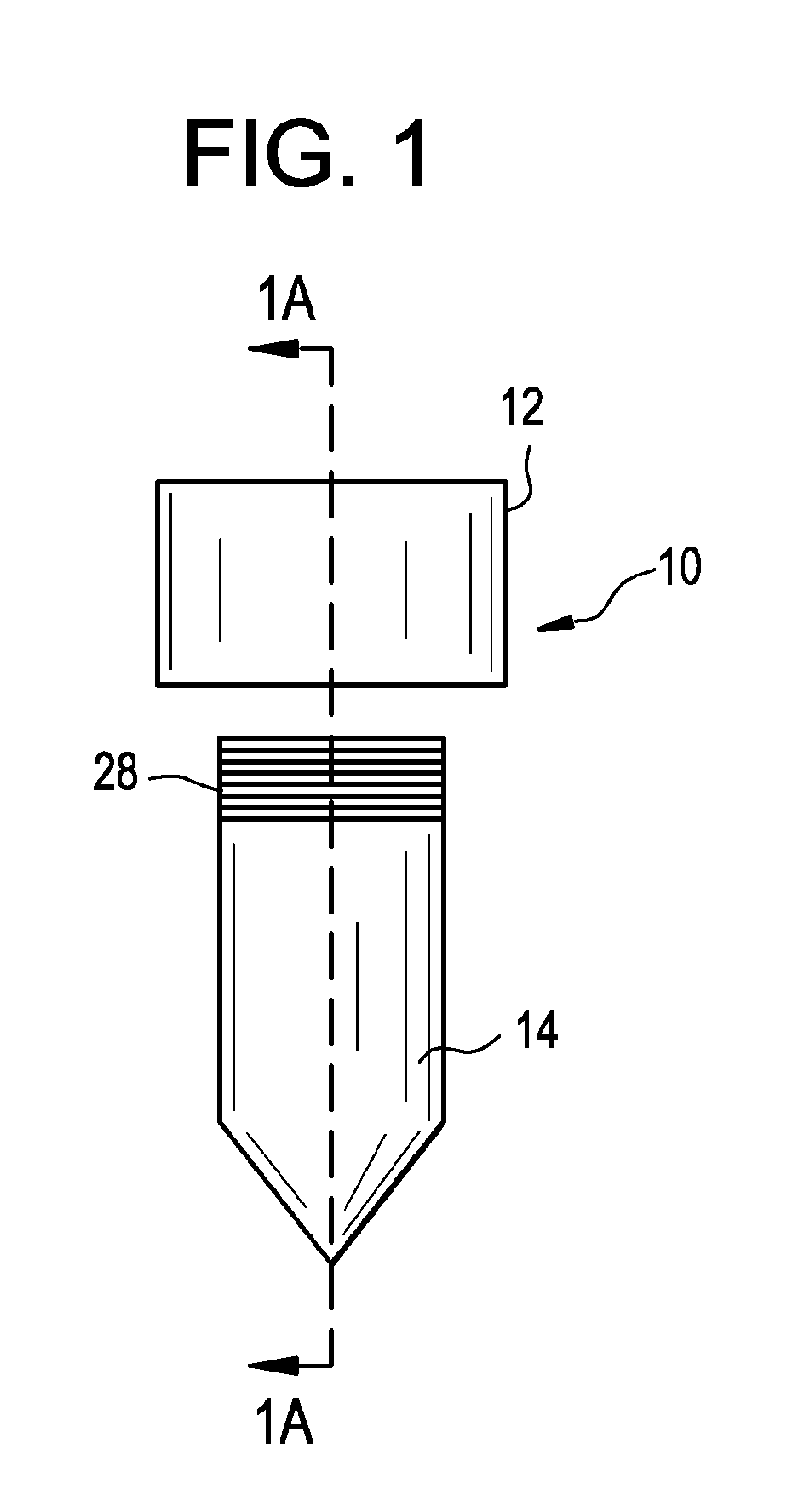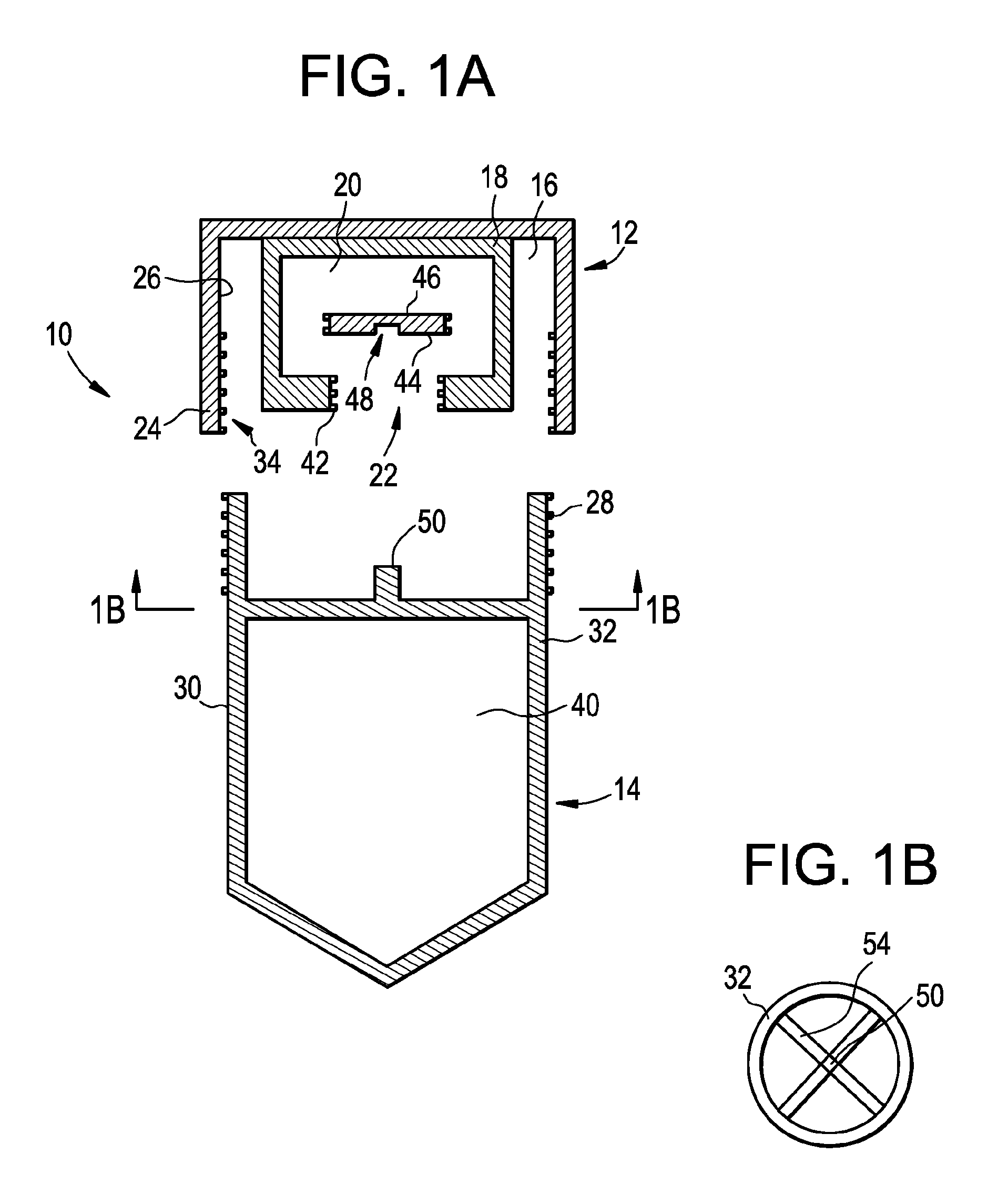Device for sample collection
- Summary
- Abstract
- Description
- Claims
- Application Information
AI Technical Summary
Benefits of technology
Problems solved by technology
Method used
Image
Examples
Embodiment Construction
[0079]Embodiments of the present disclosure include devices, solutions and methods for the collection of samples, such as bodily fluids, as well as methods for isolating one or more cell types from collected cells (chemically fixed or otherwise). For example, in some embodiments, the sample collection devices provide several advantages over currently available sample collection devices, and in addition, the sample collection devices according to some embodiments use a minimum amount of parts and the devices do not require removal or exchange of a piece or an object. Furthermore, in some embodiments, the sample collection devices may generally not require additional manipulation by the sample donor apart from depositing the sample and closing the collection device. The sample collection devices according to some embodiments include improved safety of use for both sample donors and end users due, at least in part, to the elimination of sharp objects and limited risk of exposure to tox...
PUM
| Property | Measurement | Unit |
|---|---|---|
| volume | aaaaa | aaaaa |
| volume | aaaaa | aaaaa |
| volume | aaaaa | aaaaa |
Abstract
Description
Claims
Application Information
 Login to View More
Login to View More - R&D
- Intellectual Property
- Life Sciences
- Materials
- Tech Scout
- Unparalleled Data Quality
- Higher Quality Content
- 60% Fewer Hallucinations
Browse by: Latest US Patents, China's latest patents, Technical Efficacy Thesaurus, Application Domain, Technology Topic, Popular Technical Reports.
© 2025 PatSnap. All rights reserved.Legal|Privacy policy|Modern Slavery Act Transparency Statement|Sitemap|About US| Contact US: help@patsnap.com



